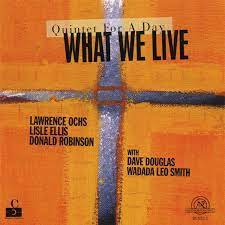
Daily Dose Of Jazz…
Lisle Ellis was born Lyle Steve Lansall on November 17, 1951 in Campbell River, British Columbia. and began playing electric bass in his teens and worked professionally from an early age in numerous environments including studios, radio & TV shows, and strip clubs. He studied at the Vancouver Academy of Music with Walter Robertson and attended Douglas College in Vancouver, Canada. He later studied at the Creative Music Studio in New York City from 1975-1979.
He moved to Toronto, Ontario, Canada where he resided from 1982 until 1983 and then went to Montreal, Quebec, Canada for nearly a decade until 1992. Lisle became the inaugural recipient of Canada’s Fred Stone Award in 1986, given annually to a musician for integrity and innovation. The Eighties saw him as a conspicuous activator of musician alliance organizations, performance venues, and concert series presentations in Vancouver and Montreal. One collective in particular, Vancouver’s New Orchestra Workshop, is still active nearly thirty years later.
After moving to the United States in 1992, he settled in San Francisco, California where he worked with Glenn Spearman for nine years. In 1994, he was a member of the Cecil Taylor band for a brief tour of California. He lived in San Diego, California from 2001–2005 and then crossed the country to New York City where he presently lives.
Since the late 1990s, he primarily focused on developing an electro-acoustic interface he calls “bass & circuitry”. By 2008 he turned his attention back to acoustic music projects with an emphasis on jazz based improvisation and to finding a balance between his electronic and acoustic music interests. Bassist and composer Lisle Ellis, who professionally has used both L. S. Ellis and L. S. Lansall-Ellis, and is known for his improvisational style and use of electronics, continues to explore the realm of jazz.
More Posts: bandleader,bass,history,instrumental,jazz,music
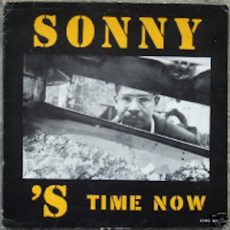
Daily Dose Of Jazz…
Sunny Murray was born James Marcellus Arthur Murray on September 21, 1936 in Idabel, Oklahoma and was raised by an uncle who later died after being refused treatment at a hospital because of his race. He began playing drums at the age of nine, however, during his teen years he lived in a rough part of Philadelphia, Pennsylvania and spent two years in a reformatory.
By 1956, he was in New York City working in a car wash and as a building superintendent. During this time, he played with among others, trumpeters Red Allen and Ted Curson, pianist Willie “The Lion” Smith, and saxophonists Rocky Boyd and Jackie McLean. 1959 saw him playing for the first time with pianist Cecil Taylor and subsequently turned his direction towards experimenting with creative new ideas. In 1961, Murray made a recording with Taylor’s group that was released under the auspices of Gil Evans as one side of Into the Hot.
In 1962 Sunny went to Europe for the first time with Taylor and saxophonist Jimmy Lyons. During that time, the group made a stylistic breakthrough while in Sweden and started playing free. While in Denmark later that year, the trio recorded the influential concerts released as Nefertiti the Beautiful One Has Come.
That same year Taylor and Murray met saxophonist Albert Ayler, with whom the group recorded together for Danish television as the Cecil Taylor Unit. Upon their return to the United States, the group performed at the Take Three club in Greenwich Village and at Philharmonic Hall, Lincoln Center in New York City on New Year’s Eve 1963 as the Cecil Taylor Jazz Unit, with a healthy Grimes on bass.
Continuing to play with Ayler, Sunny went on to join Ayler’s trio with bassist Gary Peacock. He recorded a number of albums with Ayler, and his unchained approach to percussion gave Ayler the freedom to travel his own road that had hitherto been lacking. In 1964 he played with John Coltrane, however, declined the offer to join the band.
He recorded his debut album as a leader in 1965 with Sonny’s Time Now, which was released on Leroi Jones’s Jihad label. This was followed by twenty more leader albums on various labels until 2011 with the recording of Boom Boom Cat. Over the course of his career he would record as a sideman for a host of musicians, but his final recording session as a sideman was Corona, once again teamed with Cecil Taylor, released posthumously in 2018. Drummer Sunny Murray, who had a documentary made in 2008 titled Sunny’s Time Now: A Portrait of Jazz Drummer Sunny Murray, transitioned on December 7, 2017 from multiple organ failure at the age of 81.
More Posts: bandleader,drums,history,instrumental,jazz,music
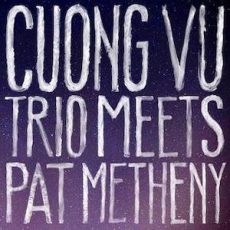
Daily Dose Of Jazz…
Cuong Vu was born on September 19, 1969 in Saigon, Vietnam and immigrated to Seattle with his family when he was six. At 11 he began to play the trumpet and later received a scholarship from the New England Conservatory of Music.
After graduation, in 1994 Vu moved to New York City and formed the group Ragged Jack with Jamie Saft, Andrew D’Angelo, and Jim Black. Since that time he has worked with Laurie Anderson, David Bowie, Dave Douglas, Myra Melford, Gerry Hemingway, and Mitchell Froom.
While a member of the Pat Metheny Group, he won two Grammy Awards for Best Contemporary Jazz Album: Speaking of Now and The Way Up. Cuong worked with Metheny mainly as a trumpeter, but also contributed vocals, guitar and various small percussion.
As an educator, he serves as chair and professor in the jazz studies department of the University of Washington’s School of Music. Trumpeter Cuong Vu has recorded eleven albums as a leader, thirty-three as a sideman, and continues to lead his own band with bassist Stomu Takeishi and drummer Ted Poor.
More Posts: bandleader,guitar,history,instrumental,jazz,music,trumpet,vocal
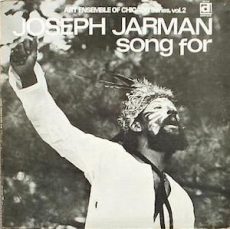
Daily Dose Of Jazz…
Joseph Jarman was born on September 14, 1937 in Pine Bluff, Arkansas, and grew up in Chicago, Illinois. At DuSable High School, he studied drums with Walter Dyett, switching to saxophone and clarinet when he joined the United States Army after graduation. During his time there, he was part of the 11th Airborne Division Band for a year.
After his discharge in 1958, Jarman attended Wilson Junior College, where he met bassist Malachi Favors Maghostut and saxophonists Roscoe Mitchell, Henry Threadgill, and Anthony Braxton. These men would often perform long jam sessions at the suggestion of their professor, Richard Wang. Mitchell introduced Jarman to pianist Muhal Richard Abrams, and Jarman, Mitchell, and Maghostut joined Abrams’ Experimental Band, a private, non-performing ensemble, when that group was founded in 1961. The same group of musicians along with Fred Anderson and Phil Cohran went on to found the Association for the Advancement of Creative Musicians (AACM) in 1965,.
His solo recording career began at this time, putting together a sextet, however, Jarman disbanded the group in 1969 after the passing of two members. He had joined Mitchell, Maghostut and Lester Bowie in the Roscoe Mitchell Art Ensemble which would eventually become known as the Art Ensemble of Chicago. The group was known for being costumed on stage for different reasons.
The group moved to Paris in 1969, and lived there for many years in a commune that included Steve McCall, the drummer who went on to form the jazz trio Air. Moving back to Chicago in the 1970s, Joseph lived in a musicians’ building in Hyde Park, with Malachi Favors as his roommate. In 1983, he moved to Brooklyn, New York.
Jarman left the Ensemble until 1993 to focus on his spiritual practice, and didn’t return to music until 1996, releasing two albums and then joining a trio with Myra Melford in Chicago, which would eventually be called Equal Interest.
Along with the saxophone and clarinet, Jarman also played (and recorded on) nearly every member of the woodwind family, as well as a wide variety of percussion instruments. Aside from his work with relatively traditional jazz line-ups, he also composed for larger orchestras and created multimedia pieces for musicians and dancers.
Saxophonist, composer, and poet Joseph Jarman transitioned from respiratory failure at the Lillian Booth Actors Home in Englewood, New Jersey on January 9, 2019. He was 81.
More Posts: bandleader,composer,history,instrumental,jazz,music,poet,saxophone
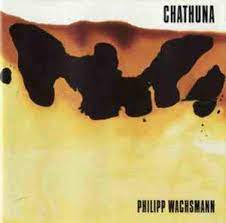
Daily Dose Of Jazz…
Philipp John Paul Wachsmann was born August 5, 1944 in Kampala, Uganda. Influenced greatly by the music of his country he studied violin with Isolde Menges, and music at Durham University, then received scholarships to study violin and composition at Indiana University in Bloomington. He went on to study composition with Nadia Boulanger in Paris in 1968 where he also attended courses in modern music given by Henri Pousseur, and, by Pierre Boulez in Basel. He subsequently lectured at Durham University 1969/70 and then moved to London to start a performing career.
He pioneered new sounds using the violin and electronics and can be heard on over 100 LPs/CDs on different labels including ECM, and plays worldwide. He performs with most of the musicians working in modern improvisation related music. He has performed and recorded with the Stellari String Quartet, The Imaginary String Trio but also works as a soloist.
He regularly conducts his own pieces with the London Improvisation Orchestra, including Three Draft Pistons’ for violin and electro-acoustic tape. He also works with film, dance and architecture. For many years he was Director of the Electronic Music Studio at Morley College and currently teaches courses in composition at the City Literary Institute.
Avant-garde jazz/jazz fusion violinist Philipp Wachsmann gives regular workshops in improvised music at various places and which have been a starting place for many of today’s performers, founded his own group Chamberpot, and has worked extensively in the free jazz and electronica idioms.
More Posts: bandleader,history,instrumental,jazz,piano




